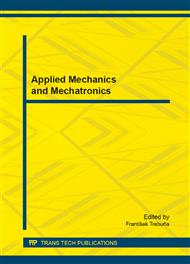p.412
p.416
p.424
p.430
p.436
p.443
p.450
p.467
p.472
Residual Stress Prediction Using Neural Network Approach
Abstract:
Procedures for residual stress evaluation by using Ring-Core method have not been standardized. Most common techniques are derived from the ones used for similar semi-destructive hole-drilling method. The differences between research approaches can cause significant errors. New approach using neural network is proposed as a more adaptive way for residual stress evaluation than the commonly used methods.
Info:
Periodical:
Pages:
436-440
Citation:
Online since:
August 2014
Keywords:
Price:
Сopyright:
© 2014 Trans Tech Publications Ltd. All Rights Reserved
Share:
Citation:


